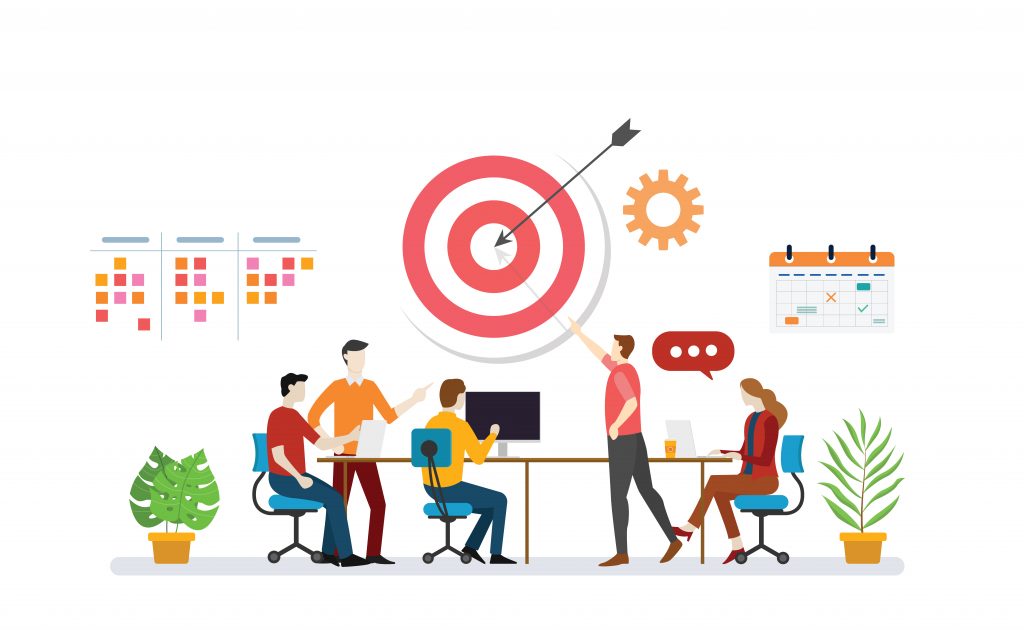Nilakantasrinivasan J

Let us explain why ‘Root Cause Analysis Boot Camp for Business Leaders’ is needed. Business Leaders are hired to drive change, bring in transformation, incubate new ideas and grow the business and not merely to sustain current levels. So it is important for them to be good at problem solving. That’s given and most business leaders come in with very good troubleshooting skills. They can clear bottlenecks and get things going.
Here are two statements about the nature of the business problems. Let’s say these are my hypotheses:
- Most of the business problems that we encounter (but for centennial events like pandemics) are not new. Eg: Not able to meet growth targets, delay in deliveries, quality and customer satisfaction issues, employee engagement & attrition issues, service disruption & continuity, etc. So the real problem solving skills that business leaders bring in is eliminating recurrence of problems.
- Today’s business models are very different. We live in a transient world where nothing is permanent – technology, people, process, product and competition. So problems are unique and cannot be solved with the same past wisdom.
I’m going to allow you to decide which of these fits in your scheme of things.
Immaterial of that, problems once solved will not recur under 3 conditions:
- We solved the correct problem (we knew the ‘Whats’)
- We identified the root causes (we knew the ‘Whys’)
- We addressed root causes with sustainable actions (we executed the ‘Hows’)
Unfortunately, we falter at least in one of these steps and that’s not good for the business. Buy why?
Based on my experience in mentoring several business leaders in solving business problems, the most common causes I notice are :
- Giving more importance to the problem solving methodology than the problem. Whether you use PDCA, DMAIC, 8D, IDOV, EDIPT, QC story, many leaders get lost in the semantics, steps, templates, etc.,
- Problem solving is siloed and not cross functional. Most business level problems need strong cross-functional participation
- Midway, they lose interest and switch to troubleshooting mode
- They are afraid to rack up the system level root causes
- Solutions are over engineered. They rely too much on technology, idealism and good will to be sustained in the long run.
How can leaders hone their business problem solving or root cause analysis skills?
The answer simply lies in learning by doing. Creating multiple opportunities to get their hands dirty with run problems and in doing so, every time improve. This is easier said than done. The most practical way to do this is through RCA Boot Camps.
Root Cause Analysis Boot Camp for Business Leaders covers:
- Acquiring knowledge by reasoning
- Self-paced digital learning
- Access to case files
- Knowledge assessments
- Working with cross-functional teams
- Working on 2 or more live problems, each time with increasing difficulty level
- Guidance and mentoring of an expert
- Defend the solution to senior management in a review presentation
- Becoming an internal subject matter expert
Should you have any questions regarding the RCA Boot Camps, feel free to reach out to us.
If you are looking for Root Cause Analysis Boot Camps in Chennai, Bangalore, Mumbai, Delhi and across India, contact us
#nilakantasrinivasan-j #canopus-business-management-group #B2B-client-centric-growth #Root-cause-analaysis #RCA
Check if you are ready for the course:
- You should be able to play the video below.
- In the video, you should be able to hear the audio music
If you have any difficulty in any of the above, please contact ISG.
- In order to commence the course, you will need course credentials to our site which will be provided by Quality Team
- As this course uses Minitab Tool for analysis, you will need to contact ISG to get access to Minitab in your laptop. (Both for remote and office access)
Nilakantasrinivasan J
Learn about Cost of Poor Quality (COPQ) and Cost of Total Quality.
Have you heard about Takata airbag failures, Toyota floor mat issue, Peanut butter fatalities, etc. and what they mean to Cost of Quality!
Learn more check out the below video:
In-depth knowledge of COPQ and COTQ will help in:
- Accurately compute or estimate COPQ
- Perform cost-benefit analysis for quality improvements to take informed decisions.
- Prioritize efforts to acquire maximum impact on profitability
- Build business acumen and present quantifiable business proposals to senior management
Register for COPQ Online Course
#nilakantasrinivasan-j #canopus-business-management-group #B2B-client-centric-growth #Cost-of-poor-quality #COPQ #COTQ
A survey was conducted among industry practitioners and experts on this. Learn more:
When everyone in the industry is focusing on Industry 4.0, Smart Factories, Industrial IOT, AI, Robotics, etc. do concepts of Lean Manufacturing such as 5S, Muda, SMED, etc still hold any relevance?
- Results of the finding
- 10 Used cases for 5S and Industry 4.0 application relevance
Nilakantasrinivasan J
#nilakantasrinivasan-j #canopus-business-management-group #B2B-client-centric-growth #5S #Industry-4.0 #MUDA #SMED #Lean-manufacturing
Benefits of doing Win-Loss Analysis

Win-Loss Analysis is a method of evaluating, comparing and contrasting the reasons for why a sale was won or lost. A similar approach that is popular is Lost-Sale Analysis.
Learn How to perform Win-Loss Analysis.
In order to appreciate the importance of Win-Loss Analysis, we will look at the ‘Benefits of doing Win-Loss Analysis’ below.
Approaching the Goal as an Opportunity and not a Problem
Quite often, whether it is do with conversion % improvement or revenue improvement, Sales Directors focus on identifying the reasons for the lost sale. They want to know about the root causes for the problem. The reality of lost sales is that, there may not be a specific negative point for sale not happening. The advantage with Win-Loss Analysis is to look at the situation through the lens of not only lost sale but also sale won. What did we do right and how?
Drawing Comparisons
By studying both Won and Lost deals, we can draw comparisons that is very useful to identify winning approaches. It can also present deficiencies the sales process. When done across sales team members, we will get to know how to align specific customer & staff personas, how to develop peer-support models, etc.
Developing Unbiased and Result Oriented Culture
Action plans so prepared by studying both won and lost cases with Win-Loss Analysis lays the foundation for an unbiased and result oriented culture among sales staff. As team members are able to appreciate the differences between Won and Lost deals, they recognize that this exercise isn’t about witch hunting. Everyone in the sales team would have some success and some failures. Thus Win-Loss Analysis, when done systematically and regularly can become a powerful coaching tool.
Won Customers are Emotionally Connected to Brand
One of the biggest advantages or benefits of applying Win-Loss Analysis instead of doing Lost-Sales Analysis is that, Won customers are emotionally connected to your brand as they recently made a purchase. They are more willing and forthcoming to share their feedback, opinions, likes, dislikes and choices with us. In simple words, we will get a good mind share from them. On the contrary, lost customers are most likely not to open up and share genuine reasons.
Check out Why doing Lost Sale Analysis is useless?
Nilakantasrinivasan J
#nilakantasrinivasan-j #canopus-business-management-group #B2B-client-centric-growth #win-loss-analysis
How To Perform Win-Loss Analysis.

Unlike Lost Sale Analysis, Win-Loss Analysis aims to take a comprehensive approach to studying the reasons for improving the sales process by evaluating orders Won and orders Lost.
Learn more about Why doing Lost Sale Analysis is useless? and the Benefits of doing a Win-Loss Analysis
Here are the steps to perform Win-Loss Analysis
- Collect a sample of both customers where we won orders as well as lost orders. Make sure you select the right ones
- Do some homework about each of those cases such as customer profile, persona, sales time lines and customer journey
- Seek interviews with customers
- Hone your interview skills as questioning, probing, listening, observation (non-verbal) skills
- Keep the interviews crisp
- Validate customer satisfaction with respect to product, features, price, finance options, sales experience.
- Probe and understand decision drivers such as consideration set, decision makers, influencers, objections etc.,
- Don’t put words into customer’s mouth and don’t expect perfect answers
- Also don’t assume that there’s always a problem for non-purchase
- Record your observations
- Study them later for patterns – both between and within Win and Lost Cases
Nilakantasrinivasan J
#nilakantasrinivasan-j #canopus-business-management-group #B2B-client-centric-growth #win-loss-anaysis
Why doing Lost Sale Analysis is useless?

When Sales directors are trying to solve sales problems such as low customer retention or poor conversion ratios, they would want their sales managers to reach out to prospects who moved up in the sales funnel but didn’t finally make the purchase. The idea behind Lost Sale Analysis is to identify the barriers for the sale by reaching out to the lost customers or prospects. While in principle this makes sense, there are several practical bottlenecks:
- Those who didn’t buy from you aren’t going to spare time for discussions like this.
They are most likely to assume this is a desperate recovery pitch and turn a deaf ear. - Prospects who didn’t make the purchase aren’t attached to your brand and are less likely to offer a candid reason for non-purchase.
Here is one more systemic reason for why Lost Sale Analysis isn’t helpful. For Ex: If a lost customer gives a missing product feature as a reason for non-purchase, then what about customers who purchased the product even when this feature was missing? Thus the absence or presence of any factor for non-purchase isn’t validated with won customers.
The most common problem with using Lost Sale Analysis is to take many actions which are not necessary or sometimes even harmful to the objective of increasing sales. For example, making the employee ask too many questions to the customer to understand customer needs before showing a suitable product or variant.
Most sales team members don’t trust this analysis because it’s just used as a mechanism to pinpoint mistakes in their skill or will by their managers.
So what is the alternative?
Consider analysing both sales Lost and Won. Learn more about how to perform Win-Loss Analysis.
Nilakantasrinivasan J
#nilakantasrinivasan-j #canopus-business-management-group #B2B-client-centric-growth #sales-analysis #lost-sales-analysis
Importance of Data Quality & Data Governance for Sales Analytics

The strength of analytics insight is a direct function of the data quality and Sales Analytics is no exception to this. In fact, in sales the dependency on external factors for data collection is so high, whether its client, customers, channel partners, marketing, operations etc., that sometimes it is impossible to produce any valuable insight from sales data.
Many of you reading the above paragraph would conclude something like this – ‘That’s why I keep telling all this analytics isn’t relevant for sales, it’s the customer relationship that matters!”. Wait, if the data or information in the sales system is inaccurate, forget analytics, it impacts business performance and that hurts the organization and you. Organizations spend more resources and effort on sales for lower return on investment. Burdens of poor communication and wrong decision making are bonus. So poor data quality in sales is not an excuse but a reason to pursue sales analytics.
When it comes to data quality, inferior quality and arrangement of data makes it difficult to perform substantial analytics. Other times, data is usable but in functional or process silos. For example: Data of one particular channel is good.
In general data quality can be assessed using the following attributes:
- Accuracy
Consistency - Completeness
We are never going to get 100% good data, as a rule of thumb, to start with, if 66% of your data is error free, some useful insights and inference can be drawn out.
Signs of good data are reflected in the overall mindset and data governance associated with sales. For example, when key data domains have been defined and created central data repositories and further when integrated, accurate, and common data is maintained in a central warehouse with an eye to look for new metrics and data, the quality of data is likely to automatically improve.
Tactically, there is nothing like collecting the data right, first time. Rules & tools for automating the data collection, preventing duplicates, ensuring quality of meta data, assigning accountability, creating data management hierarchies, etc. are some best practices.
However all of this depends on what type of data we are dealing with. Imaginery or audatory data handling are quite different and AI algorithms are available that can be deployed and used for data quality validation or even improvement of quality.
Tools are available for performing the following operations to improve data quality:
- Cleaning remove incorrect or duplicates or modify the values
- Parsing and standardization break the data into components and bring them to a unified format.
- Matching integrate or merge similar data
Profiling to score the quality using patterns, exceptions, and anomalies - Monitoring to control data quality.
- Enrichment to use external data to improve internal data quality
Here are some of the popular Cleaning tools :
OpenRefine (Google Owned), Trifacta Wrangler, Drake & TIBCO Clarity
Nilakantasrinivasan J
#nilakantasrinivasan-j #canopus-business-management-group #B2B-client-centric-growth
Sales Analytics Framework
The Analytics Framework for Sales aims to support a long term strategy of applying analytics in sales and to integrate seamlessly with remaining part of the organization’s analytics strategy.
There are 3 important pillars for effective deployment of Sales Analytics Framework. A framework like this, when implemented consistently, will shift Sales Analytics from a tactical business enabler to strategic business enabler.

There are two important prerequisites that act as a foundation for the 3 pillars and at least one over-arching philosophy to derive best out of the Sales Analytics Framework. Let us look at what are they:
Business Benefit of deploying Sales Analytics Framework:
Business Growth
The ultimate business objective of using Sales Analytics to help meet organizational long term and short term goals such as Market Share, Revenue Growth, Profitability, Customer Retention, Cross-sell, Upsell, Referral business, etc
Overarching Philosophy:
Change Management & Data Based Culture
Ultimately leaders play a big role in deciding how the outcomes of analytics are put in practice during the decision making process. Businesses have their priorities that are time sensitive and hence sales directors play a big role in deciding how these would be actually applied. Driving a culture of data or fact based decision making within the organization should be one priority when it comes to sales analytics. The benefits of sales analytics grow multi-fold when cultural change occurs.
The Pillars:
Data Management
The first and foremost success factor in Sales Analytics is the ability to acquire, clean, organize, integrate, describe, share, govern and store data to be used for analytics. Data is usually acquired from various sources. Most organizations hit a road-block right at this stage of the journey. The next step is to clean and integrate data from various sources so as to enrich its value before performing required analytics.
Sales Analytic Processes
The core sales analytic processes include the ability to enrich the data through advanced analytics & data science and to provide, visualization, exploratory data analytics (EDA), business insights to drive sales, develop predictive models such as propensity, lead scoring, up-sell, cross-sell prediction, etc. The ongoing optimization and deployment of models in the production environment and their regular refinement are all integral to Sales Analytic Processes. The element of focus for us in Sales Analytics Processes is to answer some of the design questions keeping in mind the above end states, such as Measure of Success of Analytics Program, what analytics are we going to perform, what data and models are we going to use and how will we share the results. Learn more about How can Sales Managers leverage Analytics?
Decision Engines
How do analytics capabilities deliver business value. Traditional outcomes of analytics decision engines were linked to information delivery and visualization enabled through Online Analytical Processing (OLAP)and data mining. On the other spectrum, insight discovery and integration to decision making processes are capabilities that add business value.
The Prerequisites
Sales Analytics Infrastructure
To start with organizations can work with minimal infrastructure for analytics, but to scale analytics capability, definitely investment in infrastructure is a must. Analytics Infrastructure, not restricted to Sales Analytics, includes databases and data warehouses, statistical and data mining systems, scoring engines, grids and cloud storage ,etc., The question that new entrants frequently ask is, is it not possible to start Sales Analytics without these. The answer is that it is possible. With SaaS, it is possible to put together low cost infrastructure to get started with sales analytics. In addition to storage and handling, software tools required for sales analytics are also part of the assets. While there are standard and custom tools, the best to start would be Tableau, R, Python, SAS, RapidMiner, Orange, etc. Learn more about Guide to Selecting Sales Analytics Software Tools
Sales Analytics Talent & Capability
Quite often this is the most ignored area in analytics and is also a pitfall. Organizations get neck deep in creating analytics infrastructure, acquiring talent to manage these, and analytics talent with IT capability to deploy these tools, but they fail to understand that business users are really the ones who need upskilling. If they fail to recognize and resist the usage of analytics in their daily work management, Sales Analytics will only remain a pilot project to showcase. Lead More about What specific analytical skills are needed for Sales Managers in the era of Analytics?
Nilakantasrinivasan J
#nilakantasrinivasan-j #canopus-business-management-group #B2B-client-centric-growth #sales-analytics #business-growth
Sign-up for collaborat newsletter
Where We Can Help
How We Can Help
